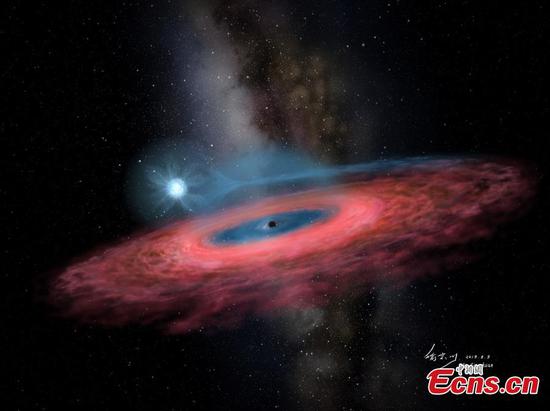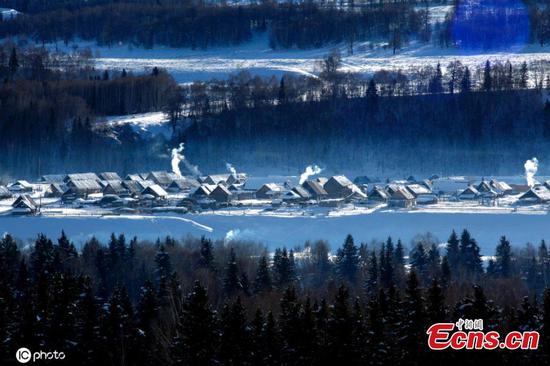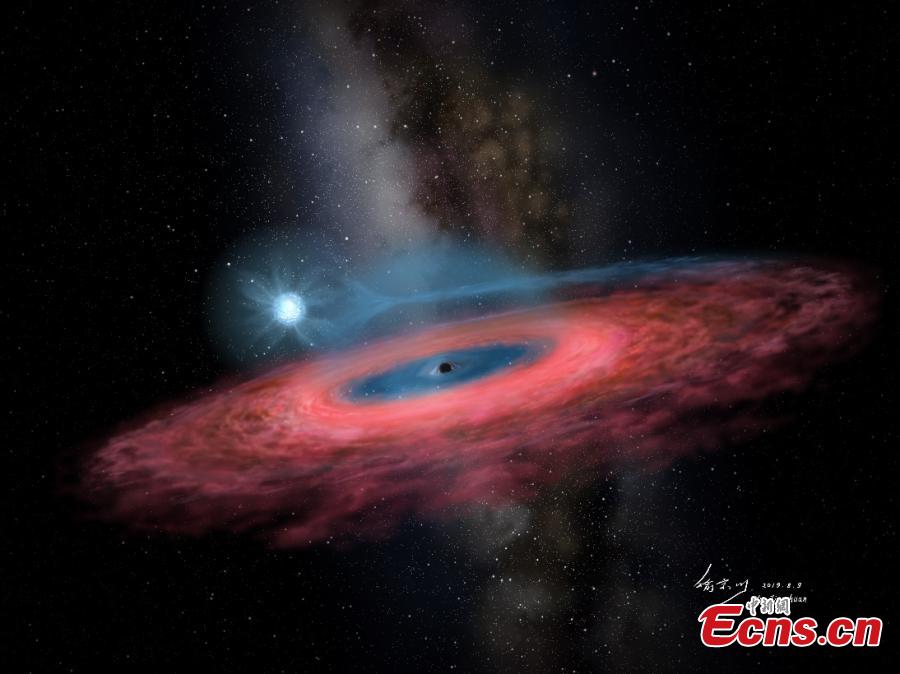
This photo shows the artistic rendering of the black hole LB-1. A Chinese-led research team has discovered a surprisingly huge stellar black hole about 14,000 light-years from Earth -our "backyard" of the universe-forcing scientists to re-examine how such black holes form. The team, headed by Liu Jifeng, of the National Astronomical Observatory of the Chinese Academy of Sciences (NAOC), spotted the black hole, which has a mass 70 times greater than the Sun. Researchers named the monster black hole LB-1. (Photo provided to China News Service)
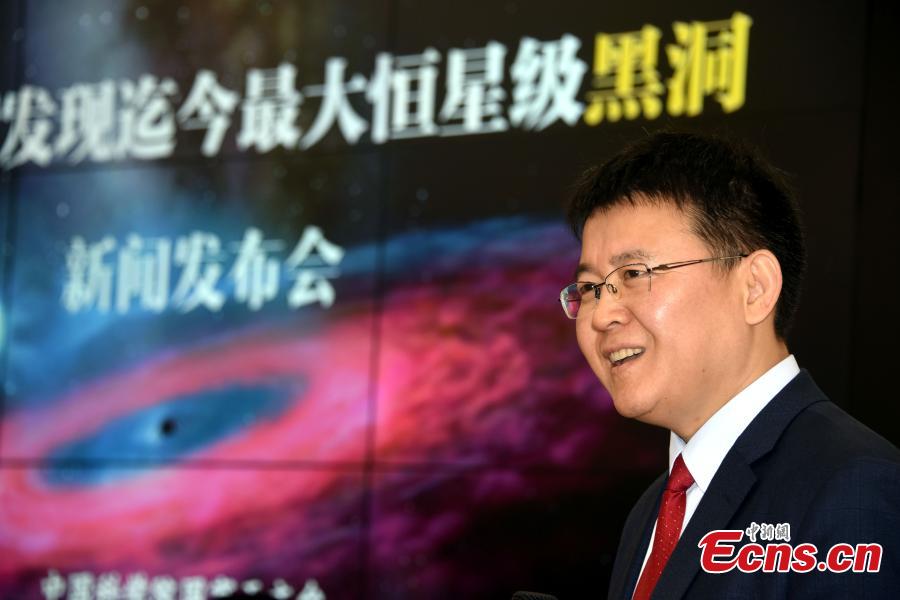
A Chinese-led research team has discovered a surprisingly huge stellar black hole about 14,000 light-years from Earth-our "backyard" of the universe-forcing scientists to re-examine how such black holes form. The Milky Way galaxy is estimated to contain 100 million stellar black holes-cosmic bodies formed by the collapse of massive stars and so dense even light can't escape. Until now, scientists had estimated the mass of an individual stellar black hole in our galaxy at no more than 20 times that of the Sun. But the new discovery has toppled that assumption. The team, headed by Liu Jifeng, of the National Astronomical Observatory of the Chinese Academy of Sciences (NAOC), spotted the black hole, which has a mass 70 times greater than the Sun. Researchers named the monster black hole LB-1.(Photo provided to China News Service)
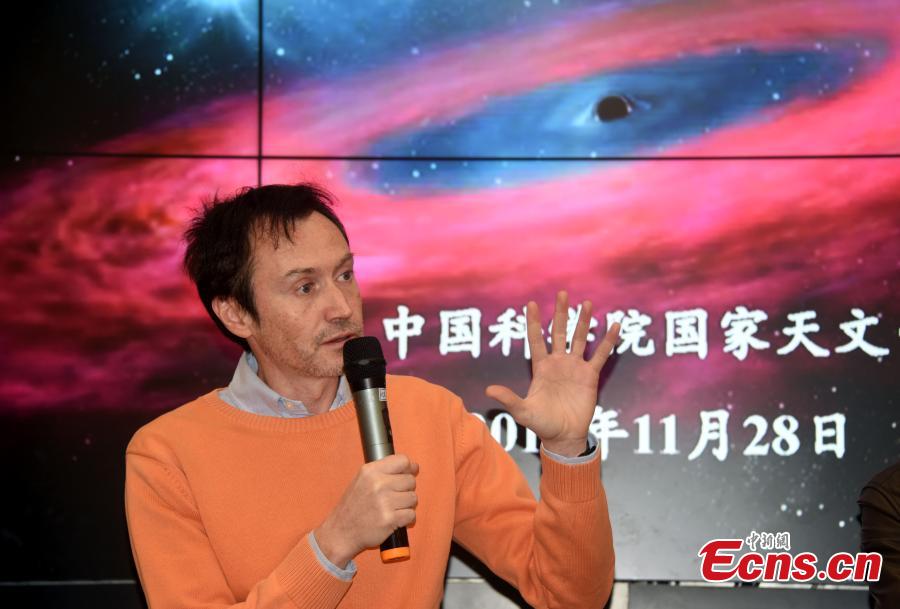
This photo shows the artistic rendering of the black hole LB-1. A Chinese-led research team has discovered a surprisingly huge stellar black hole about 14,000 light-years from Earth -- our "backyard" of the universe -- forcing scientists to re-examine how such black holes form. The team, headed by Liu Jifeng, of the National Astronomical Observatory of the Chinese Academy of Sciences (NAOC), spotted the black hole, which has a mass 70 times greater than the Sun. Researchers named the monster black hole LB-1. (Photo provided to China News Service)
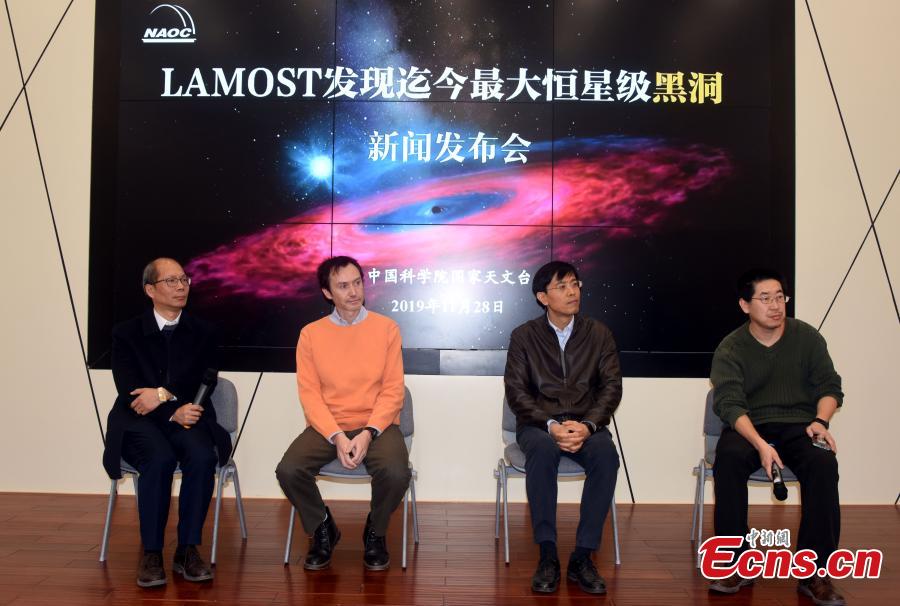
A Chinese-led research team has discovered a surprisingly huge stellar black hole about 14,000 light-years from Earth-our "backyard" of the universe-forcing scientists to re-examine how such black holes form. The Milky Way galaxy is estimated to contain 100 million stellar black holes-cosmic bodies formed by the collapse of massive stars and so dense even light can't escape. Until now, scientists had estimated the mass of an individual stellar black hole in our galaxy at no more than 20 times that of the Sun. But the new discovery has toppled that assumption. The team, headed by Liu Jifeng, of the National Astronomical Observatory of the Chinese Academy of Sciences (NAOC), spotted the black hole, which has a mass 70 times greater than the Sun. Researchers named the monster black hole LB-1.(Photo provided to China News Service)










